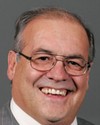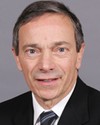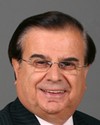Thank you, Mr. Chairman.
Members of the committee, ladies and gentlemen, my name is James Cherry and I am President and Chief Executive Officer of Aéroports de Montréal. I am accompanied today by Normand Boivin, Vice-President of Airport Operations.
We would like to thank you for giving us this opportunity to provide an overview of the system implemented at Montréal-Trudeau Airport to protect the public, civil aviation and airport facilities. We would like to begin, however, with a few definitions and clarifications.
We draw a distinction between the terms security and safety. Security consists in the prevention of unlawful acts, for example those perpetrated by organized crime or by terrorists, while airport or airline safety consists of the prevention of accidents. The two notions are often overlapping; a measure may cover both security and safety.
Risk is another notion that is closely tied to security and safety. At Montreal-Trudeau the risks are not the same in all areas of the airport facility. The security and safety measures deployed vary from one sector to the next according to the anticipated risk level.
As you can also appreciate, our security and safety system consists of several layers. Intelligence gathering is an initial line of defence and perimeter control is the second. Within the perimeter we have surveillance, which also involves several levels, and so on, down to searches, screening, and detection equipment.
Lastly, while security and safety are certainly major concerns, in our capacity as administrators our job is also to oversee efficient airport operations.
Members of the travelling public are willing to submit to all manner of requirements in terms of security and safety, but when they choose to fly, it is because they want to get from Point A to Point B in the shortest possible time. So fluidity of traffic and shorter wait times are also important considerations, as are costs.
Having made these clarifications, it is now my pleasure to present this overview of the key components of our security and safety system at Montreal-Trudeau.
Aéroports de Montréal is responsible for the management, operation and development of Montréal-Trudeau and Montréal,-Mirabel airports under the terms of a lease entered into with Transport Canada in 1992. Overseeing security and safety at the airports is an integral part of our mission. We ensure that relevant laws and regulations are applied by the various stakeholders operating at the airport, and we apply the laws and regulations that come under our own jurisdiction.
As you can imagine, this is a very important and significant task. An airport such as Trudeau has a territory of about 13.5 square kilometres, including nearly 8.5 square kilometres of restricted area; a perimeter of 30 km, including 24 km of fence; more than 11 million passengers, and one million meeters and greeters annually; more than 150,000 tonnes of cargo annually; 550 daily flights; more than 20,000 employees; and 270 businesses, several of which also have direct runway access. There are also three million vehicle movements in and around the property every year.
Security and safety encompass several areas, including aircraft security; passenger and bag security; cargo security; safety of civil aviation operations; crime prevention--theft, drug trafficking, etc.; border protection--the airport is a port of entry; security of employees; public safety; and road safety.
The mandates of stakeholders involved in security and safety at Montréal-Trudeau are determined under Canadian laws and regulations. ADM is responsible for coordinating actions within its territory and facilities.
There is a chart in the papers you have in front of you. It shows a breakdown of the security responsibilities. Ultimate responsibility for civil aviation security rests with the Government of Canada. They've chosen to delegate certain of those authorities, as you can see in the chart, to other agencies within the government, and in the case of ADM, by virtue of a lease for certain portions as well. I'll get into the details a little bit of how those responsibilities break down, but you might want to make reference to that chart at page 5, which will be useful throughout.
First, we have the CBSA, the Canadian Border Services Agency, which is responsible for the Customs program; we have Citizenship and Immigration Canada's Intelligence, Interdiction and Enforcement program; the Canadian Food Inspection Agency's Import Inspection at Ports of Entry program; and the presence of inspectors and specialized units in the passenger terminal, cargo area and sometimes on aircraft.
The RCMP has responsibility under the current system for federal airport investigation services, including organized crime and drug trafficking; the immigration and passport section, responsible for illegal immigrants and human trafficking; the customs and excise section of the RCMP that's responsible for smuggling; and the integrated national security enforcement team. As well, as part of the Canadian air carrier protection program, the RCMP is responsible for the air marshalls program.
Transport Canada has retained full responsibility for the regulation of air transport safety and security, the establishment of security and safety standards at all airports, the tests and audits of that system, and the reliability screening of airport staff. Together with the RCMP and CSIS, it is they who issue the directive to the airports to issue an airside pass.
CATSA, Mr. Duchesneau's organization, is responsible for passenger searches in Montreal's airports for three pre-boarding checkpoints, all the searches of checked baggage, supply of search and explosives-detection equipment, and the search of employees at main access points to the restricted areas. Their workforce is provided by Garda, a subcontractor.
The ADM Airport Patrol is a specialized law-enforcement agency with about 200 staff members. It is the only Canadian airport agency accredited by CALEA, a body that is similar to ISO for law enforcement agencies. The Airport Patrol's role includes surveillance, prevention, intervention and law enforcement. It is important to note that its members are unarmed.
Airport Patrol members are responsible for patrolling the entire territory, and act as first responders. The Patrol applies traffic and road safety regulations, and issues airside driver's permits. It possesses and operates specialized equipment for detecting explosives, managing bomb threats and suspicious packages, as well as threat information and assessment. Following a screening process by Transport Canada, it issues employee passes, and searches employees at access points to restricted areas in facilities under ADM control. Lastly, the Patrol develops emergency plans and procedures.
ADM also has a Fire Service.
ADM has a close relationship with the City of Montreal Police Force. The City of Montreal police officers are responsible for providing 911 services as first responders, including all criminal aspects. They are also responsible for public safety. Under a special agreement with ADM, they also have a series of specific responsibilities, including the responding to alarms at security checkpoints, ensuring a police presence in the U.S. customs pre-clearance section, and ensuring a police presence in the boarding area for flights to Ronald Reagan National Airport in Washington.
Another portion of our responsibility that's quite important is related to, as I mentioned, the large number of tenants that are on the airport property and that in fact form part of the perimeter. They are responsible--it's clearly indicated in their leases--for compliance with regulations and, if applicable, control of access to restricted areas within their own facilities. They are also subject to Transport Canada security intrusion testing--it happens frequently--and they're subject to the intrusion testing by the airport's own patrol visits program.
The airlines themselves have a great deal of responsibility in the system as well. They're responsible for the security of their aircraft. They're responsible for cargo security. They're responsible for the access control to their aircraft, and they're also responsible for the searches of their aircraft in threat situations.
One of the things that has been put in place that is relatively unique to Montreal is the significant network of information and intelligence sharing. We have three key committees involved in that. One is the airport operators committee, which groups ADM, the airlines, government agencies, Nav Canada, and the aviation service suppliers. It's the coordination of all operations.
We also have--I believe this is still unique to Montreal--a committee of law enforcement agency managers. All of the people who have any law enforcement responsibility at our airports have regular meetings to have information exchanges and coordination.
As well, our committee of partners for airport protection regroups law enforcement agencies, public security services, and CATSA. Its objective, obviously, is public safety.
We have a fully staffed operations coordination centre with a calls and distribution centre operational 24/7. It's managed by our airport patrol people as well. They're responsible also for emergency response coordination, which brings all internal and external players under a single command centre in the event of a crisis. When necessary, it can be supported by a mobile command post, which we control as well.
In conclusion, we would like to remind honourable members that major improvements have been made to the system over the years, notably in the wake of the events of September 11, 2001. Indeed, the security system in place at all major Canadian airports has been considerably strengthened.
Among other things, surveillance has been tightened for the entire airport territory and in all facilities. We have sophisticated equipment designed to protect civil aviation in this country. The police presence has been beefed up, enabling faster response times in case of incidents. Access by non-passengers to restricted areas is better controlled, and we are expecting delivery of the new biometrics-based restricted area passes, as mentioned earlier by Mr. Duchesneau.
Passenger and baggage searches have been made more systematic. For example, explosives-detection systems have been installed to ensure all checked baggage is inspected. Moreover, the list of items prohibited on board aircraft has been adjusted in response to new threats. Lastly, new coordination mechanisms have been created.
I should add that, in the wake of recent media reports, without waiting to hear the results of the Transport Canada inquiry, we met individually with each of our tenants to remind them of their responsibilities with respect to control of access to restricted areas.
The system is therefore dynamic and is being constantly upgraded, and of course, additional enhancements can be made to it in the future. For example, we have previously suggested some avenues for improvement, such as part of the Canadian Air Transport Security Authority's five-year review, on which we made recommendations to this same committee in 2001. We've also noted that cargo security could be rendered more systematic by applying the same formula for the sharing of responsibilities as for passenger searches.
Finally, we remain open to any other initiative that aims to provide for enhanced cooperation among all stakeholders and improved security and safety in our airports.
Ladies and gentlemen, thank you for listening.
We are now ready to answer any questions you may have—provided, of course—that the information requested is not of a sensitive nature, and that it lies directly within our purview.








